Winter warfare: Ukraine a case study for America’s arctic pivot
- By Coffee or Die
Share This Article
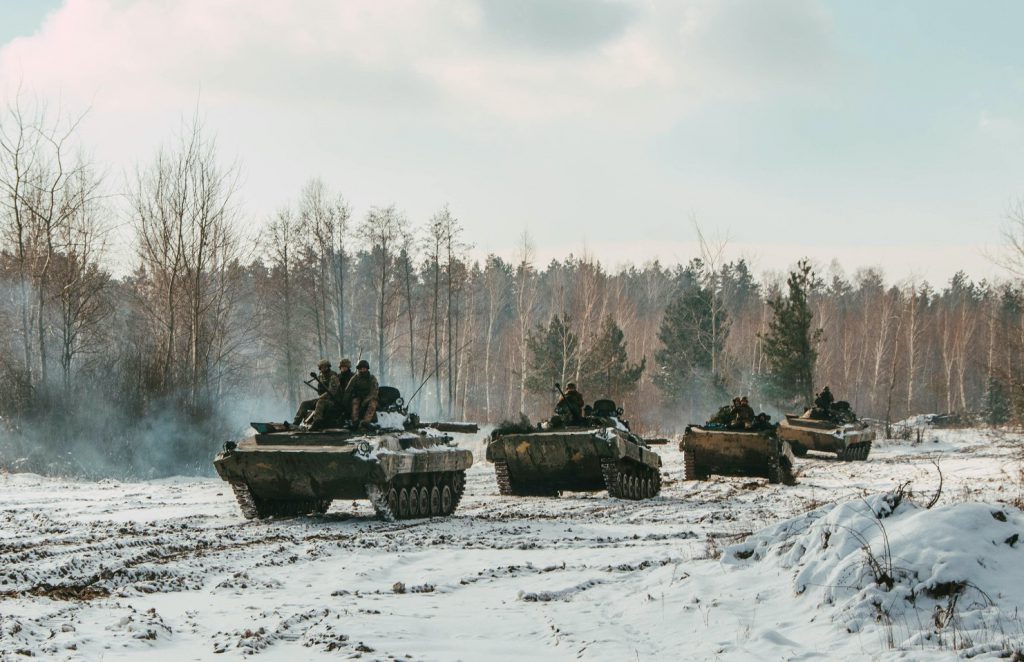
This article by Nolan Peterson was originally published by Coffee or Die.
To reach the Ukrainian fighting positions outside the village of Novomykhailivka, you must travel along a snow-covered road that precariously weaves through a minefield. Along the road, shrapnel has carved concrete power line poles like the wind-eroded sandstone buttes in Monument Valley on the Arizona-Utah border.
You see children standing beside the road and remember the insane ways in which this war, like any other, manages to coexist with normal life. Some buildings in the village bear the spattered pockmarks of shrapnel damage, while others have a caved-in wall or roof from a direct hit by a shell, or a rocket.
The Ukrainian positions are scattered and concealed within a tree line on the edge of a vast clearing. The opposite side is territory controlled by the Donetsk People’s Republic, one of two self-proclaimed, Russian-backed breakaway territories in eastern Ukraine. The white overcast sky seems to blend in with the open, snow-covered fields, which divide the Ukrainian troops from their enemies.
It is painfully cold, with temperatures dipping double digits below zero at night. And there is a steady, biting wind, which easily cuts through layers of fleece and down. Uncovered fingers quickly go numb. No matter how well dressed you may be for the cold, time spent outdoors has to be moderated to avoid frostbite or hypothermia.

For seven straight winters, Ukrainian soldiers and their Russian foes have suffered the same brutal conditions that broke the most powerful armies in history. Traveling throughout the ragtag Ukrainian positions scattered within the leafless woods outside of Novomykhailivka, you imagine the suffering that soldiers in Napoleon Bonaparte’s army must have endured fighting in this region, as well as the suffering of German and Soviet troops who fought over this land in World War II.
“The most important lesson from Ukraine’s seven winters at war is that man is a very adaptable creature and can perform in literally every type of environment — from hellish heat, to the Arctic winter frost,” Staff Sgt. Kostiantyn Denysiuk, a Ukrainian special operations forces company first sergeant, told Coffee or Die Magazine in an interview.
“At the end, I would like to say that our opponent also managed to adapt to the conduct of combat operations in the cold,” Denysiuk said. “And if we consider the Russian regular army, then it has quite strong training in this matter. And this fact must be taken into account for the future.”

Cold War
The Arctic is rapidly becoming a strategic priority for the world’s trifecta of competing great powers — the United States, China, and Russia. This winter, the US Air Force sent B-1B supersonic bombers to Norway for war games, marking the first time that US bombers had ever deployed to the country (which shares a border with Russia). Likewise, US Marines have increased the frequency of their extreme cold weather training in Norway, and US Global Strike Command now routinely operates strategic bomber task force missions through Arctic airspace. Alaska, America’s northernmost territory, is today home to more advanced fighter jets than any other state.
With that renewed Arctic focus in mind, the frigid winter battlefields in eastern Ukraine present the Pentagon with a case study in modern, extreme cold weather warfare.
“During the seven years of war with Russia, we gained a lot of experience,” Alexander Pochynok, 41, a Ukrainian army sniper who fought at the Donetsk airport, told Coffee or Die Magazine. “In the sniper business, there are also many nuances at subzero temperatures.”
Today, Ukrainian troops remain hunkered down in trenches and improvised forts along a roughly 250-mile-long, static front line in Ukraine’s eastern Donbas region where they weather daily artillery fire from an invasion force that comprises pro-Russian separatists, foreign mercenaries, and Russian regulars.

While in combat against Russian forces since spring of 2014, Ukrainians have fought tank battles and endured shelling — by explosive rounds, as well as thermobaric and white phosphorous weapons. Ukrainian troops have come under attack from Russian rockets, snipers, improvised explosive devices, drone strikes, electronic warfare systems, surface-to-air missiles, sabotage, and assassins. They’ve even fought through a pandemic.
Over the years, Ukrainian soldiers have improvised myriad solutions to match the Russian threat. And they’ve demonstrated their mechanical savvy by keeping an arsenal of Cold War-era machines and weapons in combat-capable condition. The Ukrainian military has not faced the full force of the Russian armed forces, that’s true. But they’ve experienced many of Russia’s contemporary battlefield technologies and tactics. And they’ve learned many of those lessons while also suffering in the extreme cold weather conditions of winter on the Eurasian steppe.
“What I always say to every new guy in our unit, who is meeting his first winter at war, is this: ‘Keep your feet dry, your gun lubed, and always check your muzzle,’” said Denysiuk, the Ukrainian special operations soldier.

Tricks of the trade
When US troops go to war, they usually enjoy the support of specialized units — such as the Army Corps of Engineers, the Navy Seabees, or Air Force Civil Engineers — dedicated to building and maintaining base infrastructure, even in the most austere locations. For deployed Ukrainian troops, however, this task is a collective effort, in which the diverse skills each soldier brings to the war are identified and utilized for the common good.
It often falls on front-line Ukrainian commanders to constantly inspect their troops for signs of frostbite, and to make sure they are equipped with the proper cold weather clothing. They must also make sure their troops are properly rotated in and out of the cold — preferably every hour, according to one Ukrainian war veteran who also served in the Red Army.
“From my own experience, I will say that during a severe frost — about minus 20 Celsius to minus 30 Celsius — the optimal time for a serviceman to stay outside is no more than 90 minutes,” said Petro Oleksiuk, 27, who served as junior sergeant (equivalent to a corporal in the US Army) in the Ukrainian army at the war’s outset from 2014 to 2015.
However, at many locations there aren’t enough available soldiers to constantly rotate patrols.
“In reality, neither we nor the enemy have enough people for this, therefore the schedule remains the same even in the most severe frosts,” Denysiuk said. “Therefore, the warriors try to dress as warmly as possible, using the principle of layering of clothes, and eat as high calorie as possible.”

The Ukrainian soldiers who spoke with Coffee or Die Magazine uniformly agreed that protecting the hands and feet were the top priorities in extreme cold weather combat. They change their socks often — keeping a fresh, clean, dry pair on their feet at all times. Keeping feet clean is essential for the prevention of trench foot, so the soldiers will wipe their feet clean with rags or even walk a few meters in the snow to wash off the grime after a day in the field.
“In extremely cold environments, wet clothes are your enemy,” Denysiuk said. “Most frostbite in our military conflict occurs on the toes.”
In winter, the Ukrainians ditch low-ankle footwear, opting instead for thick, insulated, waterproof boots — preferably with insoles that have a foil coating to retain heat. They make sure their footwear isn’t tight, to promote blood flow to the feet and allow a layer of insulated air inside the boot. Sometimes, they coat their boots with lard to keep them watertight and insulated.
“It is best to wear long socks so that the upper part of the sock comes out above the boots,” Oleksiuk said. “When going into combat, each soldier must have a minimum of two pairs of boots.”
If their boots do get wet, Ukrainian troops never hold them close to a fire to dry out since the intense heat may cause the material to deform or disintegrate. Rather, they often stuff their wet boots full of newspaper to absorb the moisture.

One toe warmer per boot is standard and generally lasts for three to four hours. And if they’re forced to stay put in one place for a long time, the Ukrainian soldiers will typically try to find something other than snow to stand on — such as a piece of wood or foam. Soldiers are also advised to always bring an extra pair of gloves. And over their military uniforms, they prefer white Gore-Tex jackets or robes for their shell layer.
“During active movement in the cold, the soldier’s body will sweat less, and therefore the warrior will be less cold,” Oleksiuk said, explaining the advantages of Gore-Tex. “From my experience I will say that in a camouflage robe with Gore-Tex, you can lie in the snow for a long time, and it will be harmless to the human body.”
The soldiers’ diets mainly comprise traditional Ukrainian foodstuff — including copious amounts of buckwheat, bread, potatoes, and sweetened condensed milk. With some 900 calories per 100 grams, cured pork fat — a Ukrainian delicacy known as “salo” — is an especially popular winter snack option among Ukrainian troops.
“During the cold it is necessary to drink as much hot tea as possible — water has a large heat capacity, and therefore the human body heats up quickly,” Oleksiuk said. “Food should be high in calories, but without heavy fats so as not to burden the liver.”
Alcohol, however, is discouraged. “The use of alcohol is especially dangerous,” Denysiuk added. “It creates the illusion of warmth, but reduces the sensitivity of the limbs — drinking even a little risks frostbite.”
Nearly everyone smokes, however. And at night, amid the occasional rumble of distant explosions, the soldiers stand casually outside for as long as they can tolerate the cold to enjoy a cigarette or two. Desensitized to the war, they are able to instantly and instinctively tell when the shooting is near enough to pose a real threat.

Hide and seek
Under the guise of a separatist rebellion, Russian Special Forces and intelligence units orchestrated an irregular warfare takeover of the Donbas in the spring of 2014. Dilapidated by decades of mismanagement and plundering for foreign arm sales under successive post-Soviet governments, Ukraine’s military could barely field some 6,000 combat-ready troops when the war began.
Legions of civilian volunteers ultimately banded together and joined up with ad hoc partisan units. This grassroots defense of the homeland turned the war’s tide. By summer, Ukrainian forces had nearly regained all the ground their country had lost in the Donbas. Then Russia outright invaded the region in August 2014 and the war became a mechanized slugfest, with artillery and rocket barrages, as well as tank combat. The apocalyptic close-quarters fighting at the Donetsk airport in the winter of 2014 to 2015 showed how savagely the two sides were willing to fight.
Successive cease-fires have failed to stop the fighting, but they have since early 2015 locked the war along a relatively stable, entrenched front line. Today, combat is mostly fought at a distance. In places, no man’s land is miles wide. In others, the Ukrainians and their enemies are close enough to trade verbal insults.
Ukrainian forces are now dug in, battle hardened, and better armed than when the war began. In some locations, the trenches have transformed into underground fortresses with wood-burning stoves and copiously stocked with supplies. Those front-line redoubts remain adequately warm, even in the worst winter conditions.

After seven years of static warfare, the Ukrainians say the locations of their positions are well known to the Russian enemy. Moreover, Russian forces often use drones to spot their artillery and mortar fire. And both sides have used drones to drop grenades and small antipersonnel munitions on their enemies.
“Usually the trash from Russian [meals, ready-to-eat] and garbage around the dugouts made them easier to spot in winter,” said Denys Antipov, a former first lieutenant who commanded a recon drone platoon in the Ukrainian army’s 81st Airborne Brigade from 2015 to 2016.
Antipov’s unit used the Ukrainian-made “Mara” drones. He said the frequent overcast skies in winter often forced him to fly his drones at lower altitudes, exposing them to enemy fire. “Winter makes you fly lower and if you fly lower, your camera has better resolution,” Antipov told Coffee or Die Magazine. “So you see better. But as a tradeoff, the danger increases of being shot down.”
In light of the constant drone threat, food and fuel supplies are often delivered at night while maintaining radio silence. Field camouflage is also especially important in winter, when there is less natural concealment.
Snow conceals booby traps and mines, making travel between trench lines more perilous. And without leaves on the trees there’s also less natural concealment for recon teams or other foot patrols to hide from drones. Due to the prevalence of thermal imaging tools on both sides of the lines, camouflaging one’s heat signature has become just as important as visible spectrum concealment.
“I realized that camouflage in winter in modern conflicts is shifting from the visual direction to thermal camouflage, because the main method for detecting personnel and living positions in trenches is becoming heat detection,” Denysiuk said. “Therefore, it is imperative to make earthen and wooden screens in all open areas of the trench line, as well as to remove smoke from the stoves as far as possible from residential positions, because they are used to recognize targets for artillery attacks and aimed fire using anti-tank guided missiles.”

Early morning fog, a common occurrence in eastern Ukraine during the winter, is often used as a time to repair equipment or sections of the trenches since the enemy is less likely to spot such activities. However, at places where the two camps are separated by the width of a standard farm field — about half a mile — snipers can still use thermal scopes through the morning fog.
Although the war is largely locked at an entrenched standstill, Ukrainian troops are always ready to move on a moment’s notice in case of an enemy breakthrough attempt. For that reason, it’s especially important in winter to keep vehicles in working order.
“If antifreeze is not available, use ordinary water as a last resort, but then the equipment should be warmed up from time to time,” Oleksiuk said. “It is very important that the water does not freeze.”
Since diesel engines take a longer time to warm up, the Ukrainians generally prefer gasoline-powered engines in severe cold conditions. Nevertheless, the engines should be turned on and heated periodically to avoid hard freezes.
Personal equipment, too, requires special considerations in extreme cold. Oleksiuk said he used Pulsar Quantum and Pulsar Apex thermal imaging scopes and PVS-7 night vision devices in combat. These imaging devices worked “perfectly” in the cold, he said, although the batteries in the thermal scopes quickly expired in the cold.
“That caused discomfort, as it is very inconvenient to insert new batteries into the Pulsar DNV battery pack in the cold,” Oleksiuk said. “In order for batteries or rechargeable batteries to retain charge, they must be kept as close to the body as possible.”

This is my rifle
Ukrainian soldiers go to great lengths to avoid exposing their weapons to extreme temperature shifts. When traversing friendly territory, they try to keep their weapons in cases. And when returning indoors after extended periods in the cold, they do their best to leave their weapons outside to avoid a temperature change that can leave the metal on the weapons covered in condensation.
Emphasizing that “snow conditions are wet conditions,” Denysiuk said every precaution should be taken to keep weapons dry and free of corrosion.
“That’s why you always need to keep your weapon systems lubricated inside and outside,” Denysiuk said. “But be careful to not overdo it, because below minus 20 Celsius the liquid form of most lubricants will become a solid paste and could cause a malfunction.”
To oil their weapons, the Ukrainians sometimes use a particular type of brake fluid, which supposedly does not create condensation when the weapon is changing temperature. For camouflaging their weapons in snowy conditions, they use white, heat-resistant paint and white medical tape.
Bullets have a slower muzzle velocity in extreme cold weather, requiring soldiers to adjust their sights and ballistics calculations. Ukrainians are also particularly careful to keep their weapons out of the snow.
“It is worth remembering that a shot from a barrel filled with snow is almost always a barrel rupture,” Denysiuk said. “So checking the muzzle from time to time could become a great idea when the snow is always around you.”
One advantage of Ukraine’s Cold War-vintage arsenal is the rugged reliability of those old Soviet weapons — particularly in the extreme cold. “In general, our army has at least some benefit from using mainly old Soviet weapons in this war … they have excellent reliability in the extreme cold environment,” Denysiuk said.

Ready for war
Ukrainian forces shifted their fighting positions into the fields and woods outside of Novomykhailivka in the war’s first year to spare civilians from Russian return fire. Consequently, the Ukrainians are more exposed to enemy shelling outside the concealment of the village. The move also increased their exposure to the lethal winter cold of eastern Ukraine.
To deal with the cold, soldiers spend about a week on the front lines before rotating out to positions a few miles to the rear where they can take warm showers, eat hot food, and leave the direct line of fire. While on the front lines, the troops typically spend about two hours at a time in the trenches and weapons emplacements before they swap out to warm up in their underground shelters. It’s simply too cold to stay outside much longer than that.
The Ukrainian soldiers’ forest redoubts offer little respite from the cold. A small plywood cabin marks the entrance to one such position in which a handful of troops are holed up. Just to the left through the entrance is a small kitchen space. It’s open to elements and frigid inside. Here, the soldiers make coffee in tin cups over a gas burner. Their breaths mist in the subzero air. Knees bob up and down — an instinctual tick to keep warm — as the soldiers sit and chat.
Food comes mostly from tin cans. But there are some vegetables and other basic foodstuffs brought in by volunteers. For a high-calorie snack, some soldiers like to scoop gobs of sweetened condensed milk with slices of salo — like chips and salsa on caloric steroids.
Underground, where the soldiers sleep, the earth provides some insulation, but it’s still bitter cold. A stairway descends from the entrance into an underground chamber. Wooden bunks line the bare earth walls; roots protrude out of the black earth. Flashlights are the sole means of illumination. The soldiers’ existence is objectively miserable. Yet, they see little alternative.
“The most important lesson the Ukrainian army has learned is that the enemy cannot be underestimated,” Oleksiuk said. “Never expect the enemy to make a mistake. He is just as ready to fight as we are.”
Related Posts
Sandboxx News Merch
-

A-10 ‘Thunderbolt Power’ Framed Poster
$45.00 – $111.00 Select options This product has multiple variants. The options may be chosen on the product page -

‘Kinetic Diplomacy’ Coaster (1)
$7.00 Add to cart -

‘Sandboxx News’ Camo Trucker Hat
$29.00 Select options This product has multiple variants. The options may be chosen on the product page
Coffee or Die
Coffee or Die Magazine is Black Rifle Coffee Company’s online news and lifestyle magazine. Launched in June 2018, the magazine covers stories both about and for the military, first responder, veteran, and coffee enthusiast communities.
Related to: Military Affairs
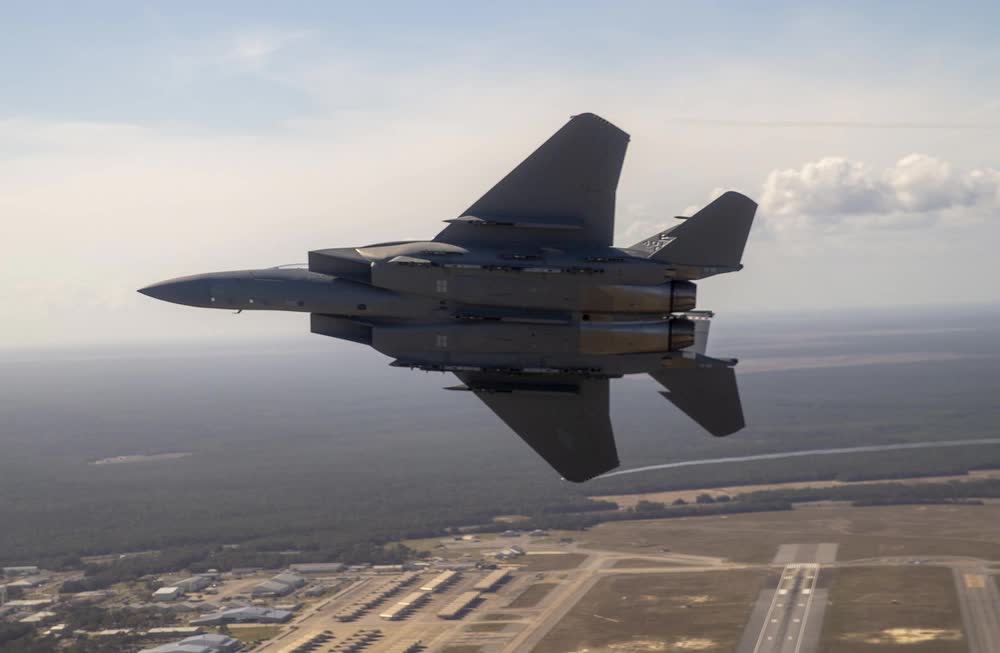
Video: The wild plans to use the F-15EX in the early days of a war
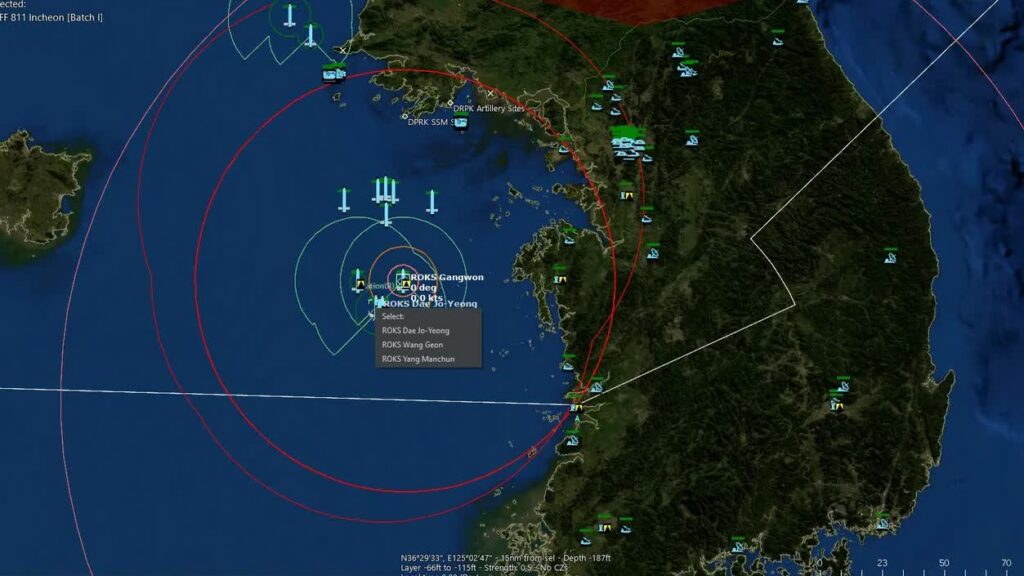
The Air Force is letting troops play a video game to prepare for global conflict
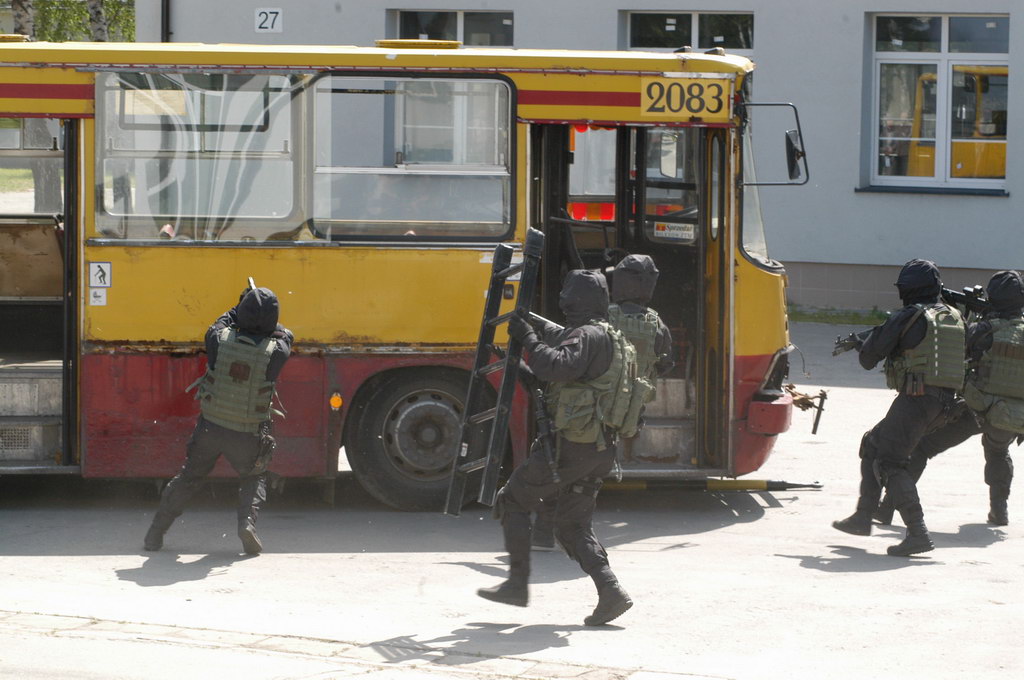
Delta Force escapades with Poland’s elite GROM special operations unit
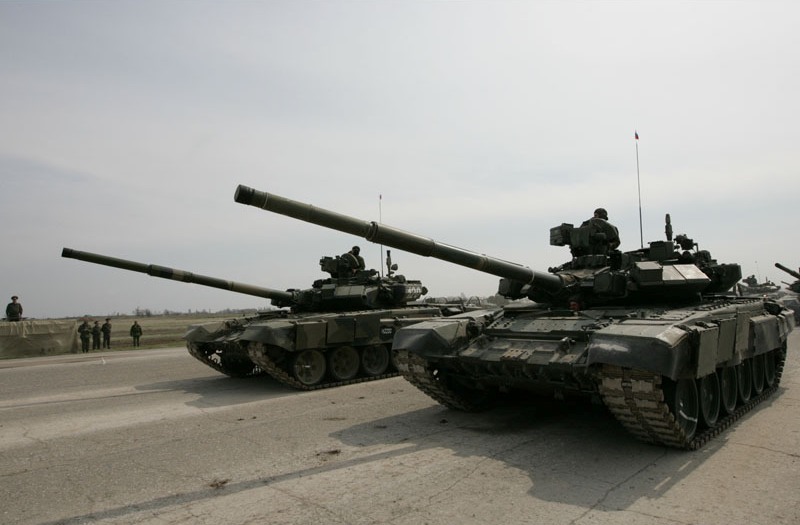
Ukraine is facing serious problems in the east, where Russia’s forces are grinding forward
Sandboxx News
-

‘Sandboxx News’ Trucker Cap
$27.00 Select options This product has multiple variants. The options may be chosen on the product page -

‘AirPower’ Classic Hoodie
$46.00 – $48.00 Select options This product has multiple variants. The options may be chosen on the product page -

‘AirPower’ Golf Rope Hat
$31.00 Select options This product has multiple variants. The options may be chosen on the product page -

‘Sandboxx News’ Dad Hat
$27.00 Select options This product has multiple variants. The options may be chosen on the product page
